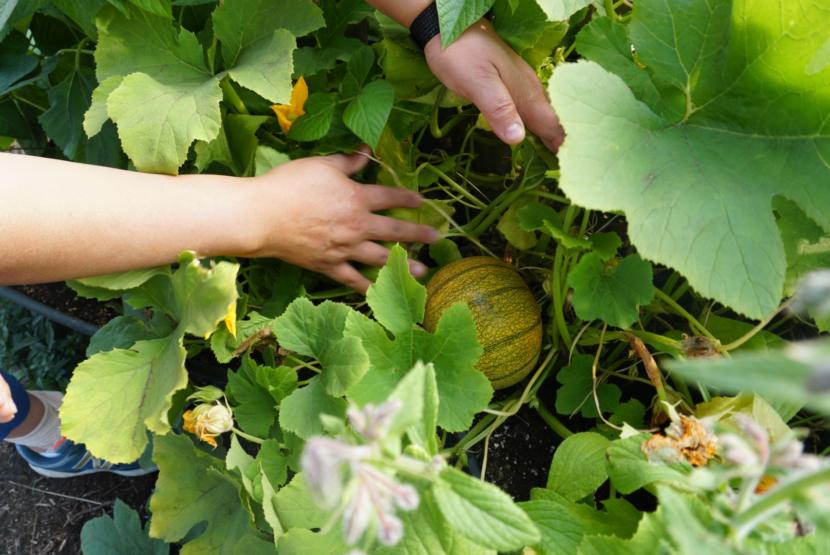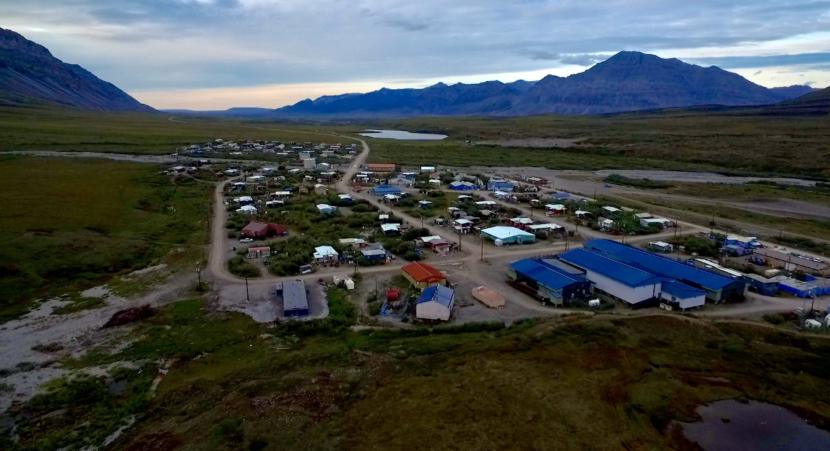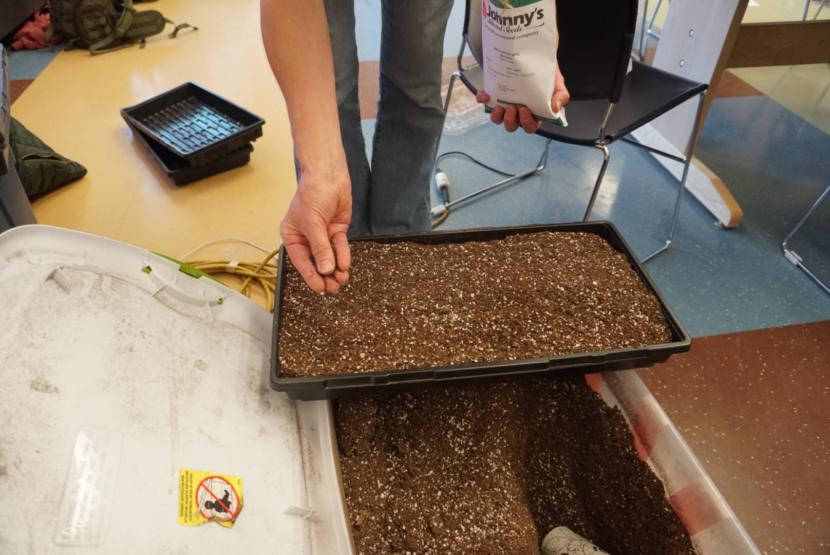
In her small backyard in Anaktuvuk Pass, Nasuġraq Rainey Hopson opens the hatch to a wooden box.
Inside, a flurry of teenage chicks look up in surprise. “They’re like little dinosaurs,” Hopson said with a smile.
Hopson eats the eggs and meat and uses the chicken poop as fertilizer for her garden. She said growing food locally just makes sense in a place where a one-pound cabbage can cost $12. But, it’s not exactly common.
When she started gardening about a decade ago, her neighbors were curious. She was eating beautiful green salads all summer, a rare treat in the remote village where food is either hunted, gathered or flown in, and the meat-eating culture is strong.
“At first it was a lot of confusion,” Hopson said.”Cause it’s not a ‘normal’ Inupiaq Native thing to be gardening, or to be involved in agriculture.”

Getting started wasn’t easy. Hopson spent time in Northern California when she was young, working in her grandmother’s garden. But when she applied that knowledge in the Arctic, it failed miserably at first.
“My stubbornness kicked in,” she said, laughing. “And now you’re just making me mad, and I’m gonna make things grow here.”
Hopson spent hours poring over what little information existed about growing in the Arctic, turning to far away places like Siberia and Norway for advice. And she started talking to elders. She was surprised to learn that historically, roots, berries and leaves made up a large percentage of the Inupiat diet.
“One of the original elders here used to bury potatoes along creeks and come back in the fall and dig up and get hundreds of pounds of potatoes,” she said. “I thought that was fascinating.”
Now Hopson has developed her own breed of agriculture that incorporates Alaska Native plants like stinkweed and a high tunnel she installed in 2016 with funding from Petrostar and the Arctic Slope Regional Corporation. Some of her recipes mix traditional and western plants, like pesto made with mashu or Eskimo potato. Hopson sells about 150 pounds of produce a year and gives half of what she grows to elders. The main goal of her project, which she calls Gardens in the Arctic, is to help her community eat healthier food and have a reliable food source.

Communities like Anaktuvuk Pass rely heavily on subsistence food. Community leaders chose the pass as a permanent settlement in the late 1940’s because it’s the site of a massive annual caribou migration, but the patterns of that migration are no longer reliable in part due to climate change.
For Hopson, Gardens in the Arctic is just one more way her people are adapting to survive. Adaptation is a skill they’ve used in the past when they faced colonization, forced family separations, and the pressure to give up a nomadic lifestyle.
“Our talent and our Inupiaq-ness — our Native-ness — is tied to our adaptability,” she said. “Being able to survive and thrive because we are adjustable.”
Her project is giving elders like Louisa Kakianaaq Riley hope. Riley grew up gathering plants but said when her generation was sent to boarding school, much of that knowledge wasn’t passed on.
“What Rainey’s doing is getting us reintroduced to how important it is to have your own produce and how satisfying that is,” Riley said. “It’s all around mentally, spiritually, physically great.”
Inside the brightly-colored Nunamiut School in the village, Hopson is helping lead an agriculture workshop put on by the Fairbanks Soil and Water Conservation District. Participants are learning to plant microgreens. They fill a black plastic tray with potting soil, scatter seeds over the top and gently press the soil down.

Agribusiness is practically non-existent across the North Slope thanks to harsh growing conditions and little historical precedent. But district coordinator Joni Scharfenberg said environmental, health, and food security concerns are fueling a new interest in local agriculture in the region.
“And in fact, in the last couple years, there’s been agricultural interest all over North Slope — several communities,” Scharfenberg said. “And through our different partnerships we’ve learned that.”
Workshop participant Katie Qaġġun Roseberry hopes to pass this skill on to her students back home in Utqiaġvik. She co-teaches contemporary and Native food preparation at Iḷisaġvik College. She said she wants to teach people to eat healthier.
“I thought this would be a really good…start to learning myself to be able to re-teach to other people, so they can grow their own food for themselves,” she said.
And that’s exactly what Hopson’s hoping for. She teaches workshops, gives advice to other North Slope gardeners, and builds garden kits for families in her community.
“One of my goals is to have more of me. I want there to be 30, like 30 of Rainey weird agriculture people all across the slope so it’s not just me,” she said. “I want it to be normal.”
Until then, she’ll keep experimenting. Hopson’s already planning a second high tunnel.
